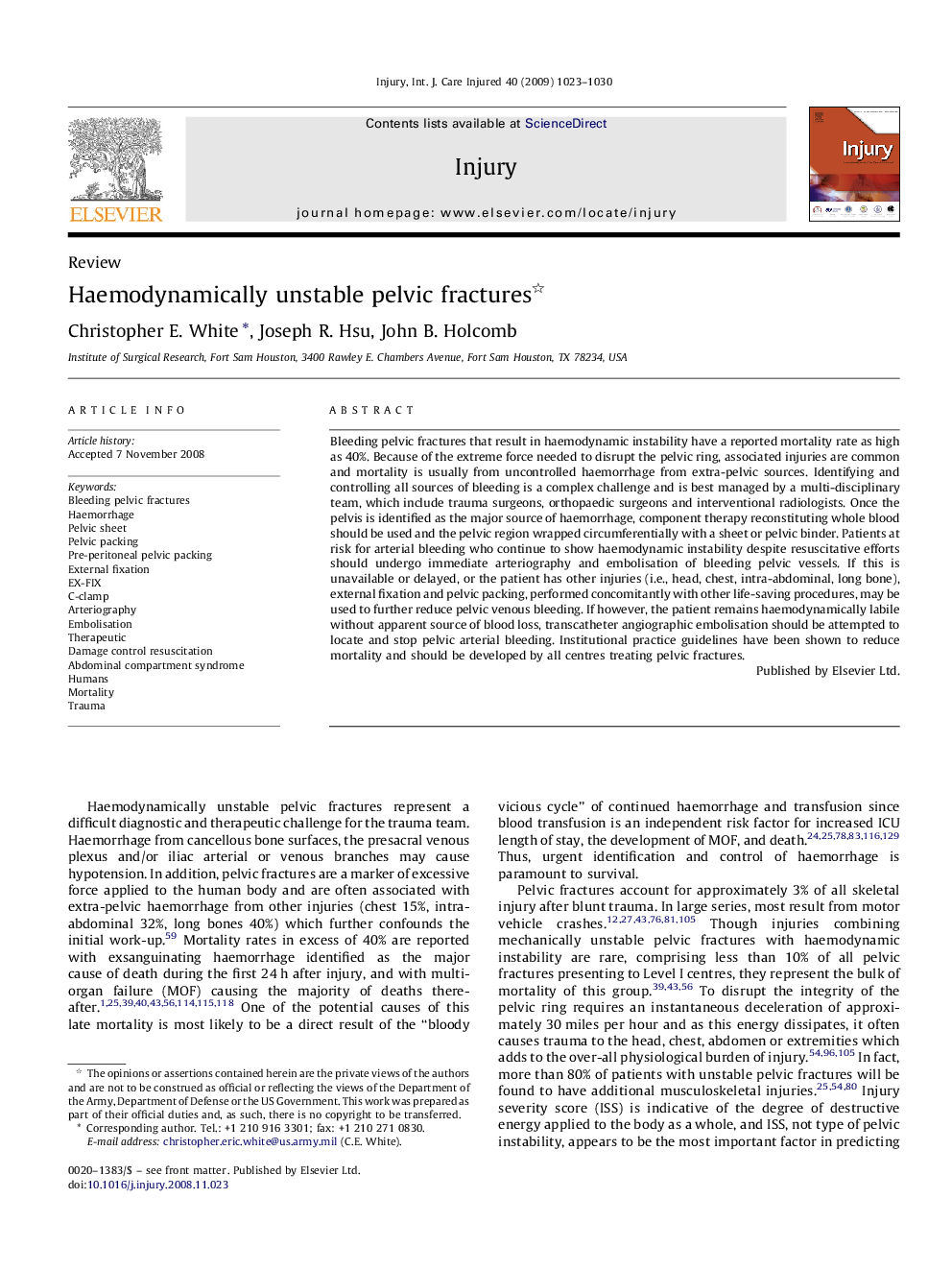| کد مقاله | کد نشریه | سال انتشار | مقاله انگلیسی | نسخه تمام متن |
|---|---|---|---|---|
| 3240948 | 1206060 | 2009 | 8 صفحه PDF | دانلود رایگان |

Bleeding pelvic fractures that result in haemodynamic instability have a reported mortality rate as high as 40%. Because of the extreme force needed to disrupt the pelvic ring, associated injuries are common and mortality is usually from uncontrolled haemorrhage from extra-pelvic sources. Identifying and controlling all sources of bleeding is a complex challenge and is best managed by a multi-disciplinary team, which include trauma surgeons, orthopaedic surgeons and interventional radiologists. Once the pelvis is identified as the major source of haemorrhage, component therapy reconstituting whole blood should be used and the pelvic region wrapped circumferentially with a sheet or pelvic binder. Patients at risk for arterial bleeding who continue to show haemodynamic instability despite resuscitative efforts should undergo immediate arteriography and embolisation of bleeding pelvic vessels. If this is unavailable or delayed, or the patient has other injuries (i.e., head, chest, intra-abdominal, long bone), external fixation and pelvic packing, performed concomitantly with other life-saving procedures, may be used to further reduce pelvic venous bleeding. If however, the patient remains haemodynamically labile without apparent source of blood loss, transcatheter angiographic embolisation should be attempted to locate and stop pelvic arterial bleeding. Institutional practice guidelines have been shown to reduce mortality and should be developed by all centres treating pelvic fractures.
Journal: Injury - Volume 40, Issue 10, October 2009, Pages 1023–1030